On a suffocatingly humid Friday morning in August, I sat in a rental car parked outside the home of Thom Robb, the leader of the Ku Klux Klan, wondering if I should knock on his door. A shirtless, muscle-bound, heavily tattooed carpenter who lived down the road – and swore he wasn’t racist or a Klansman – said Robb was “a really nice guy” who wouldn’t mind my turning up at his house without an appointment.
Klansmen, I reckon, aren’t “nice” guys by definition, and as Robb’s mean-sounding dog barked at me from the other side of his fence, I feared the neighbor was setting me up to get my head blown off. I wondered if Arkansas, the only state in the Union where they’ll throw you in prison for failing to pay your rent, had a stand-your-ground law that would justify Robb spraying a few bullets in my general direction. I wanted to leave, but I knew I’d probably never again be in the backwoods of Arkansas with an opportunity to meet one of the country’s most notorious racists. I really wanted to meet this man, for reasons I still do not completely understand.
I met Justin, a portly young man who, when I asked if he was from Harrison, said ‘unfortunately, yes’
Why was I visiting Arkansas solo in August, the swampiest month of the year in a state that sees comparatively few visitors from outside the region? Arkansas may not lead the country in much, but it has had its share of colorful nicknames: the Bear State, the Toothpick State, the Land of Opportunity, Rackensack and the Natural State. It has the Ozark Mountains; it was the home state of the “Man from Hope,” Bill Clinton; it has the most Walmart locations per capita and hosts the company’s headquarters; it is the birthplace of cheese dip. But it is often overshadowed by its Deep South neighbors. A popular YouTuber, for example, rates it as only the second most redneck state in America, behind Mississippi. And while Mississippi and Alabama typically place 49th and 50th in poverty and other socioeconomic metrics, Arkansas usually lands 46th or 47th – forgettable in its sub-mediocrity.
That’s a shame, because, as I found out this summer, it’s a strangely appealing place, full of surprises. Who knew the second-most redneck state in the country was also full of antique shops, bookstores and charming small towns with perfect squares? Places like Leslie, Conway, Wilson, Mountain Home and Pocahontas are virtually unknown outside the state but are as delightful as any small towns I’ve visited anywhere in America. But I didn’t travel to Arkansas to sightsee.
My primary purpose was to explore two communities accused of racism. Harrison and the neighboring hamlet of Zinc, population 90, have been jointly branded the “most racist town” in the US thanks to a pair of men named T(h)om: Robb, whose Christian Identity Church and KKK headquarters are in the unincorporated backwoods between the two places, and Tom Bowie, a Zinc resident who’s been labeled “America’s most racist man” in a host of viral YouTube videos. I also wanted to visit Return to the Land, an intentional “whites only” community three hours to the east.
Robb’s pontificating gave me a headache, but I still had more racists to meet
For a place with a serious PR problem, Harrison – with its quaint town square and appealing shops – made an unexpectedly good first impression, though a barbershop just off the square with a Confederate flag out front isn’t something you see in most states. Outside the bustling Town House Café on the square, I met Justin, a portly young man who, when I asked if he was from Harrison, said “unfortunately, yes.” I asked him if the YouTubers who’ve accused Harrison of being the “most racist town” were accurate and he said, “I think they’re very accurate.” A gay man, Justin said the town was full of bigotry of all sorts and insisted he planned to leave as soon as he finished nursing school.
Elsewhere in Harrison, I met a young couple about to leave their home for the long commute to their jobs at the Trump store in Branson, Missouri. The young man was wearing a T-shirt depicting a muscle-bound Donald Trump and the phrase, “Everyone Wants to Be Trump, Until it’s Time to Do Trump Stuff.” Both insisted that theirs isn’t a racist town. “The most popular kids in high school were black,” said the woman. On the gravel road leading to the KKK compound, the shirtless man who said Robb was a nice guy also maintained that neither Harrison nor Zinc is racist. “He’ll show you his church,” he said of Robb, “just stop by his house.”
He then gave me directions to the house, which is right around the corner from the compound. On the way there, I met Tom Bowie and his wife, who were hauling jugs of water back to their home. I told him that his racist musings on YouTube had helped several black creators make a lot of money and he didn’t disagree. His wife insisted that Arkansas was considered racist long before her husband moved to the state from Maryland. She said he was speaking “truths” that others were too afraid to. Some of these included her contentions that “the Indian people that come over here do not know nothing” and “the Jews run a lot of things.”
I don’t know if Robb has a side hustle – I imagine being head of the KKK renders you unemployable – or if he draws a salary as the head of the Knights party and pastor of the Christian Identity Church, but the man has a pleasant two-story home with a wide porch and an expansive lawn. I let his dog bark for a bit to see if Robb would come out to greet me. When he didn’t, I drove to the gates of the compound, which were locked. A middle-aged woman – you guessed it, white – who introduced herself as Rebecca was parked outside the gate. I told her I had a travel YouTube channel called Mad Traveler and liked to visit offbeat places, which is true and seemed more innocuous than saying I was a journalist. She promised to go get Robb. Five minutes later he arrived, driving a white Jeep with a novelty Confederate flag license plate on the front.
Robb is 78 and gives off a grandfatherly vibe, at times grasping, Biden-like, for words. “I don’t like to waste my time with most YouTubers,” he said. “But Rebecca said you seemed nice.” I hopped in my car and followed him up the gravel path between rows of American flags toward the KKK headquarters. Robb wore jeans, a checked short-sleeve button-down shirt, and a cowboy hat. He was initially cordial, but when we walked by a sign listing the Ten Commandments and I asked him if being a Klansman was compatible with the Golden Rule (love thy neighbor), he grew combative. “So, that’s why I can’t understand why people don’t love their heritage,” he said. “They claim to believe in the commandments, but they don’t love the people. They’re willing to watch white people being genocided, and they don’t care.”
There wasn’t much to see. The church – whose parishioners are roughly half Klan members, Robb said – was unremarkable. The KKK headquarters could have been a branch of State Farm if it weren’t for the black-and-white photos of hooded Klan members at rallies of yesteryear on the walls. We sparred a bit unproductively. Robb kept asking me to “name a white neighborhood where I’d be afraid to visit.” I explained that if he looked up my YouTube channel, he’d see I wasn’t afraid to go anywhere. I had just recently visited some of South Africa’s most notorious black townships and found nothing but nice people in them. He insisted that he wasn’t giving Harrison or Zinc a bad name and pointed to modest population growth in the area. “People want to live in safe white areas,” he said.
Democrats and those who list their pronouns on social media are unlikely to be accepted
Robb’s pontificating gave me a headache, but I still had more racists to meet that day, outside the tiny town of Ravenden. Return to the Land is a 160-acre community with a private membership of “a few dozen,” according to the co-founders, Eric Orwoll and Peter Csere. One must apply to join, and only straight white people who are Christian or not “militant” atheists are accepted. As I drove the lonely country roads of northeast Arkansas heading to their compound, I saw numerous Trump flags and a massive billboard that said “TRUMP WON – BIDEN CHEATED.”
Ravenden is 97 percent white. I asked Orwoll, 35, why it was necessary to restrict non-whites since such people would be unlikely to apply anyway. “America is becoming less white so unless we have intentional spaces for white Americans, there’s no guarantee that’s going to be an option for my kids and grandkids and they should at least have that option,” he said, noting that he grew up in Southern California but “no longer feels welcome there” due to immigration. A burly man named Scott, who wore a heavy plaid shirt despite the heat, said, “We want to live around other whites… and you never know, it only takes one business to bring in tons of foreign workers, change the whole demographics of the town.” Scott told me there’s no requirement to be a Republican but acknowledged that Democrats and those who list their pronouns on social media would be unlikely to be accepted. Csere, 34, is a former liberal who founded a vegan commune in Ecuador where he lived for nine years. He said he didn’t want to live near gay people because he claimed that they are more likely to molest children. Days before I arrived, the New York Times published a deeply critical piece on the Arkansas community, noting that Csere was once arrested in Ecuador for stabbing a miner (he says it was self-defense and was apparently never convicted of a crime) and stands accused of stealing tens of thousands of dollars from the vegans. The Times also rehashed a story from London’s Daily Mail that Orwoll and his ex-wife, who also lives in the community, used to livestream sex acts on a porn website, where her profile said she was into men, women and trans people.
I steered clear of all these allegations because I was primarily interested in why they felt the need to form this community, but nevertheless Orwoll and the rest were on edge in the wake of the Times hit piece. I asked him, his fiancée Allison and Scott if they’d rather live with white liberals or black conservatives. They all said they preferred white liberals because they could possibly change their politics. But this question and others I asked irritated Orwoll, who said I was “ruder and pushier” than reporters from the New York Times and CNN. Apparently, he thought that since I’m generally conservative, I was coming to town to tell them what a great idea their community was and was disappointed that wasn’t the case.
I had recently taken a 23andMe DNA test which revealed that I have 5 percent African ancestry. Orwoll said this blemish wouldn’t “necessarily” scuttle my application should I choose to apply to Return to the Land, but he made it sound like it was a strike against me. I wanted to interview some of the women in the community, but Orwoll said he couldn’t recommend me, since I didn’t seem “friendly” to their goals.
On my way out, I went to say goodbye to Steve, a Canadian who had been cordial to me when I arrived. He was hammering nails into his half-built home, listening to loud country and western songs with liberal use of the n-word and other racial epithets including “coons.” Apparently, Eric had by that point sent a Telegram message to the community advising them to steer clear of me. Steve wouldn’t look at me or shake my hand when I extended it to him. “Nah, I’m good,” he said, turning his back.
This article was originally published in The Spectator’s September 29, 2025 World edition.



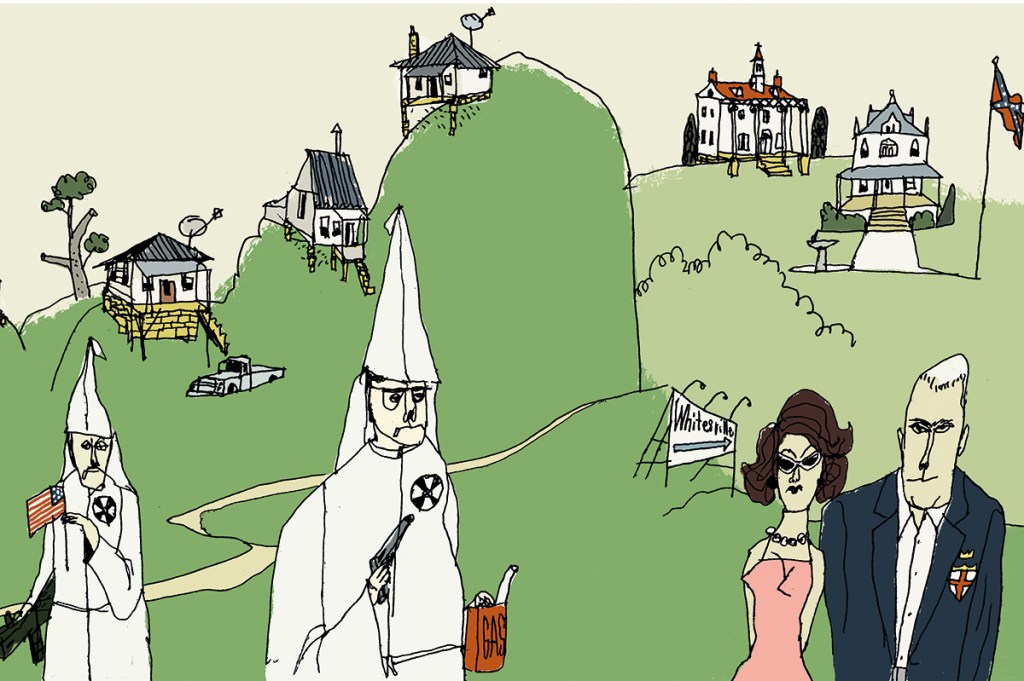






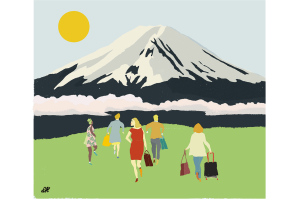
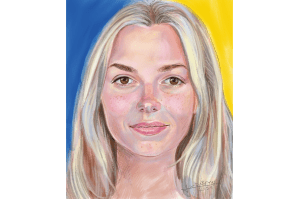
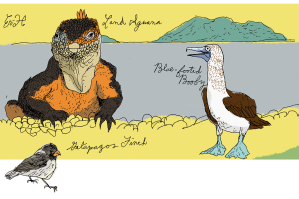
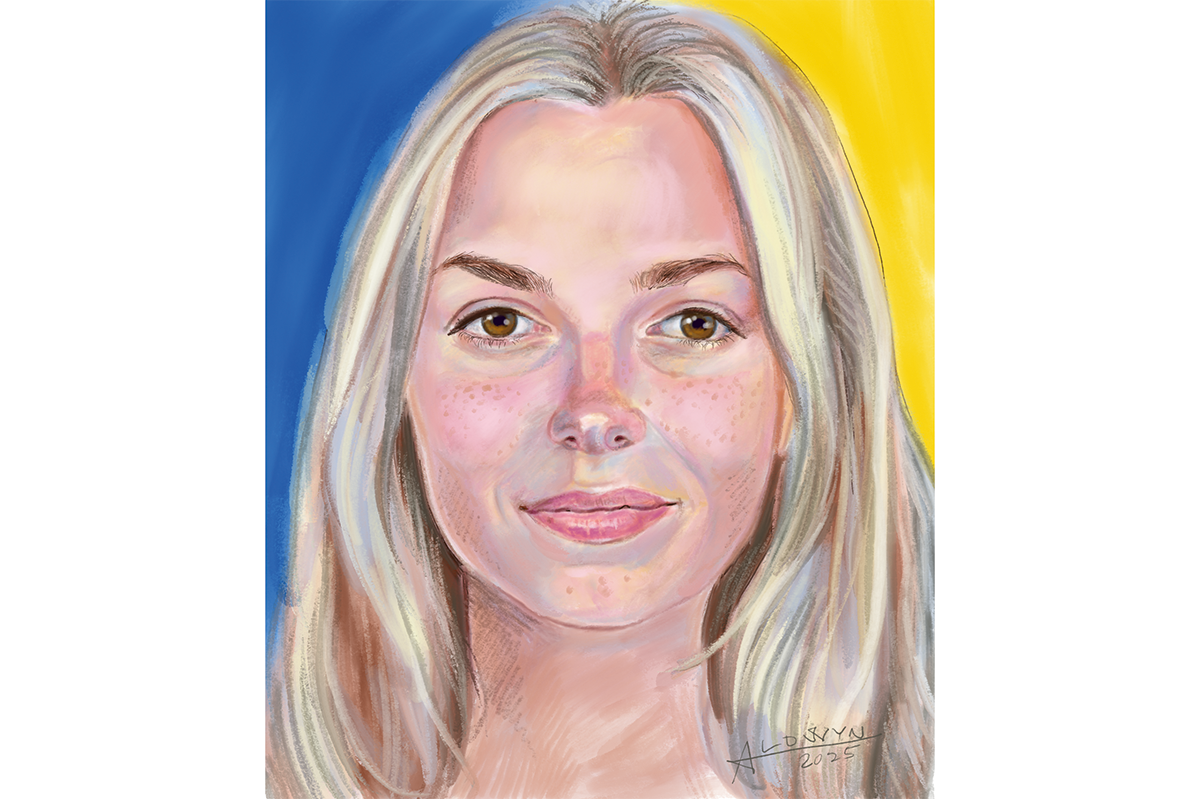


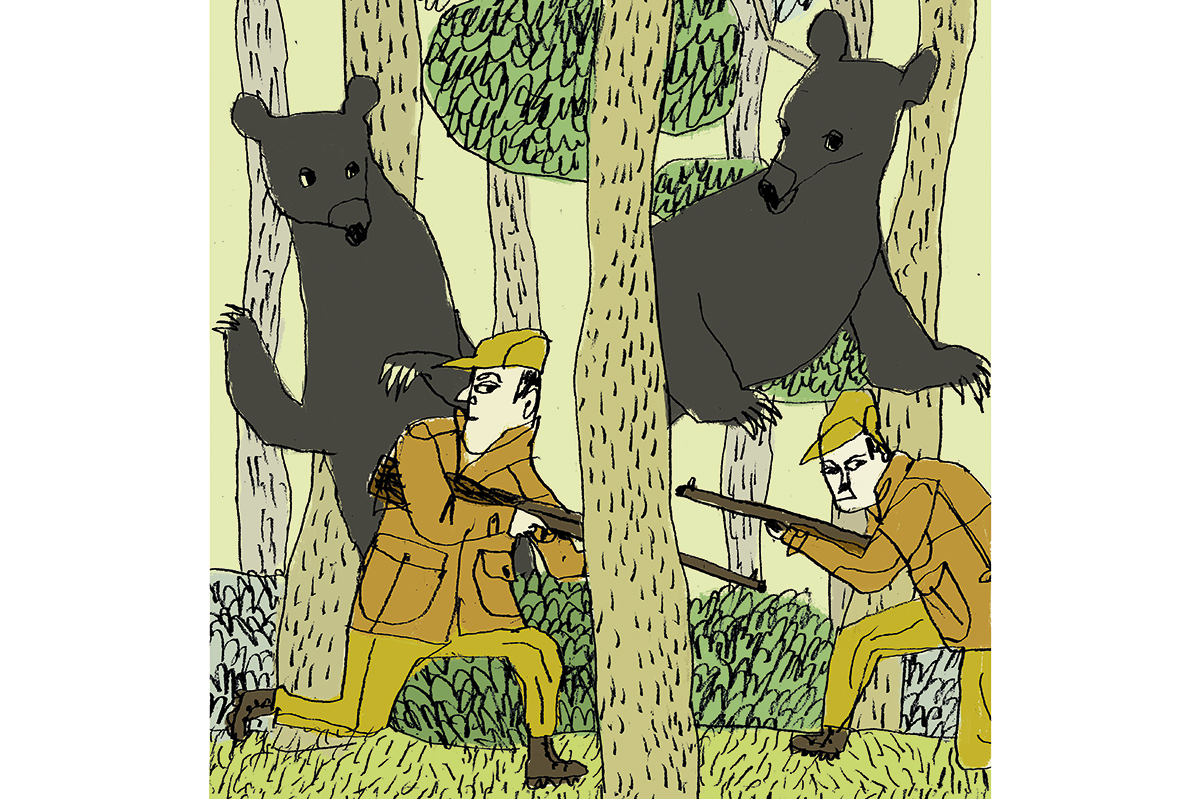

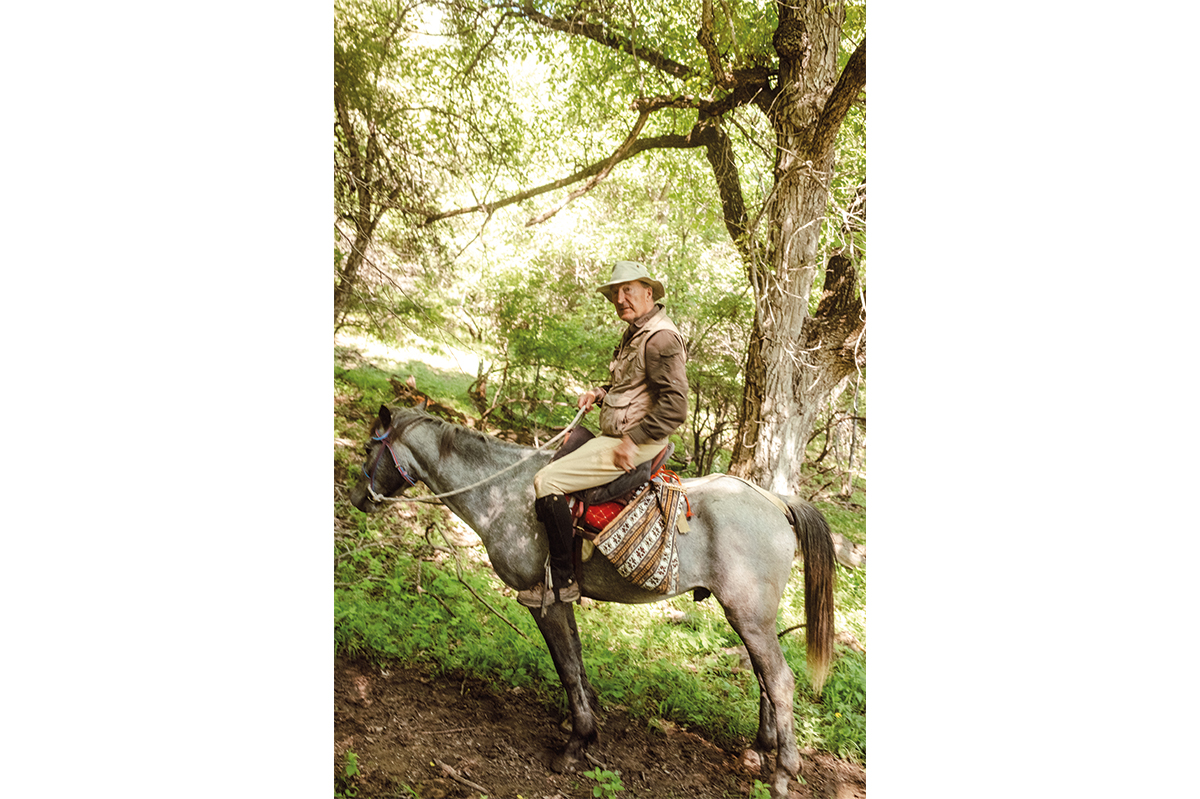







Leave a Reply